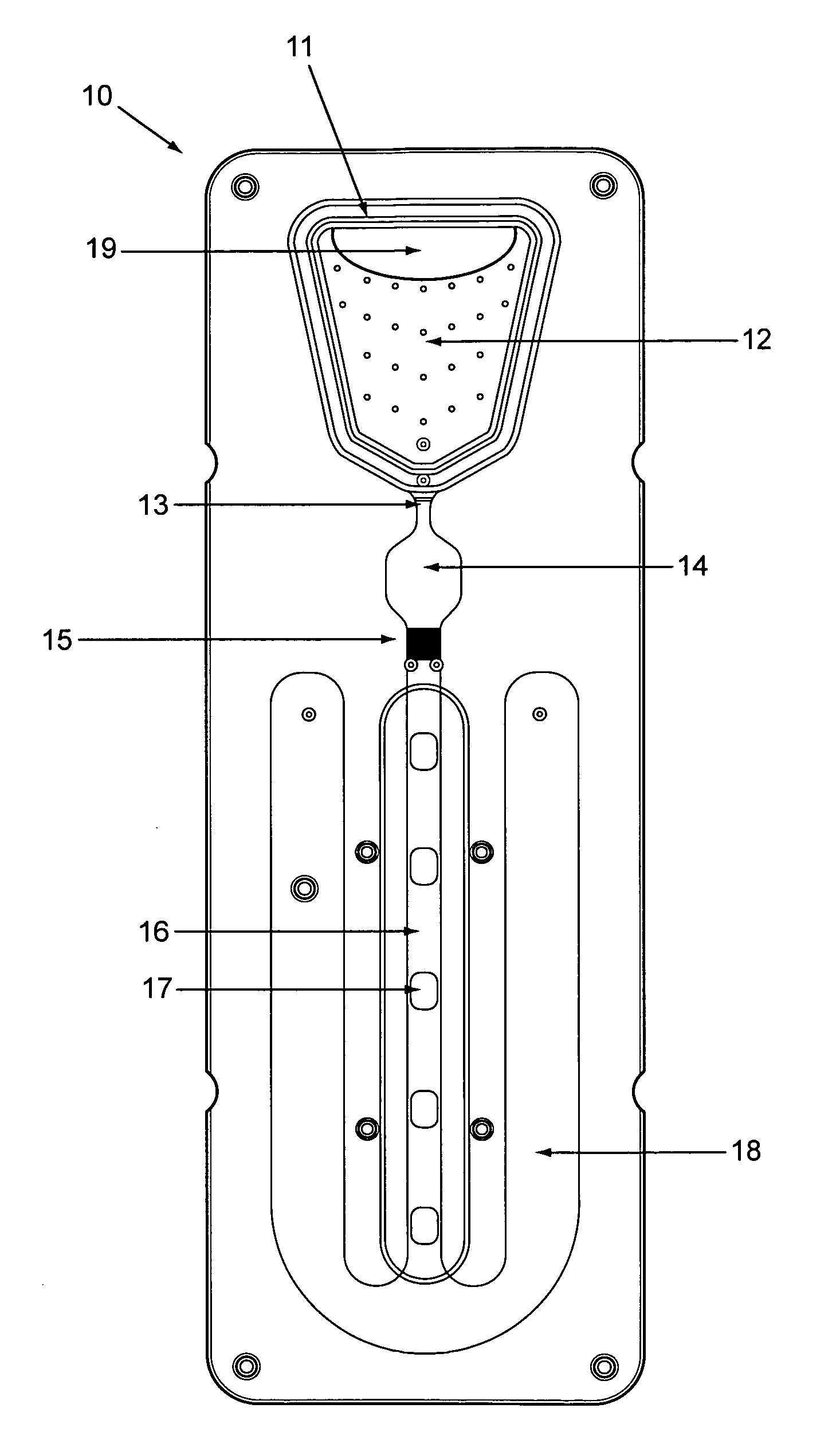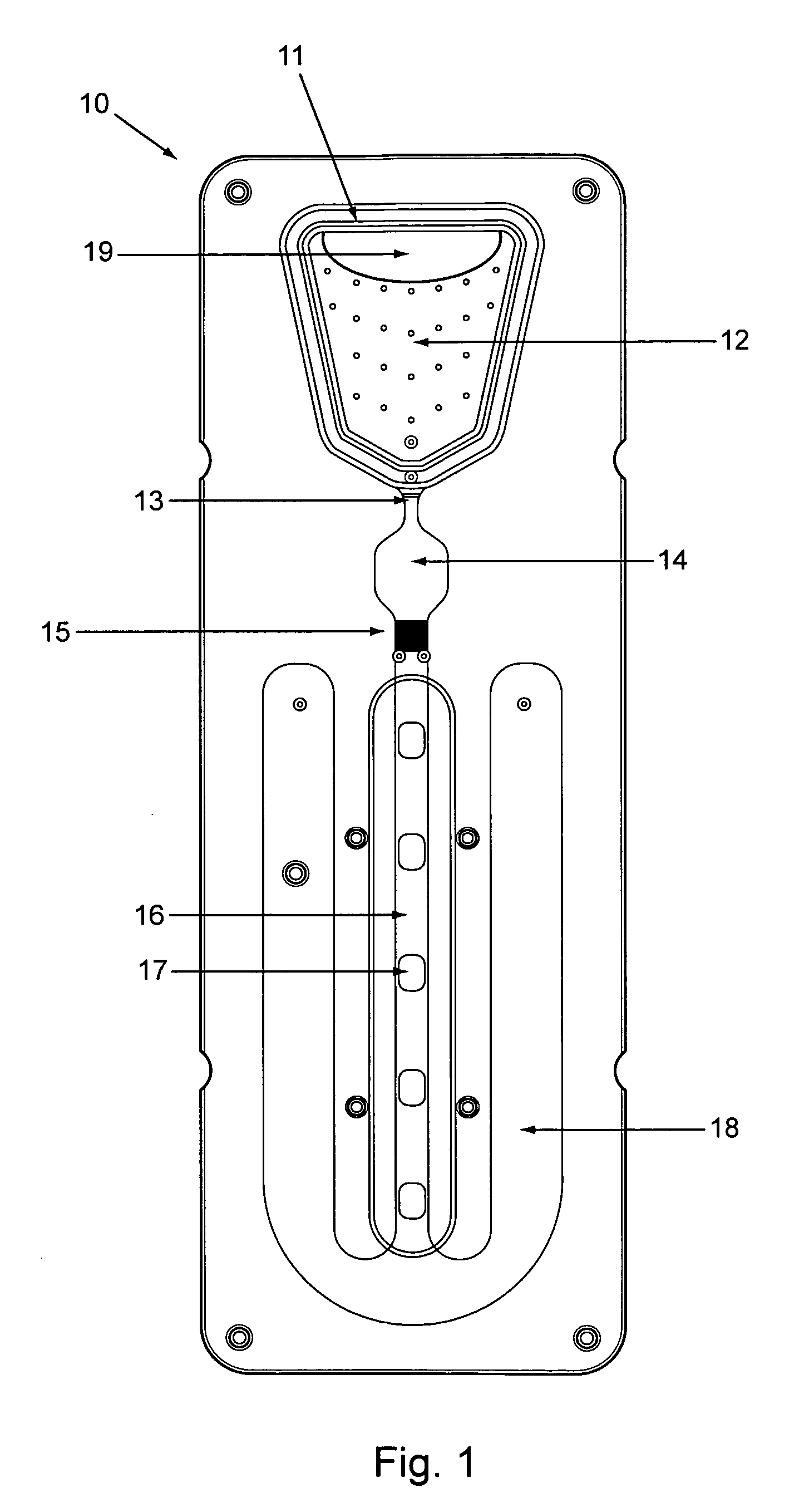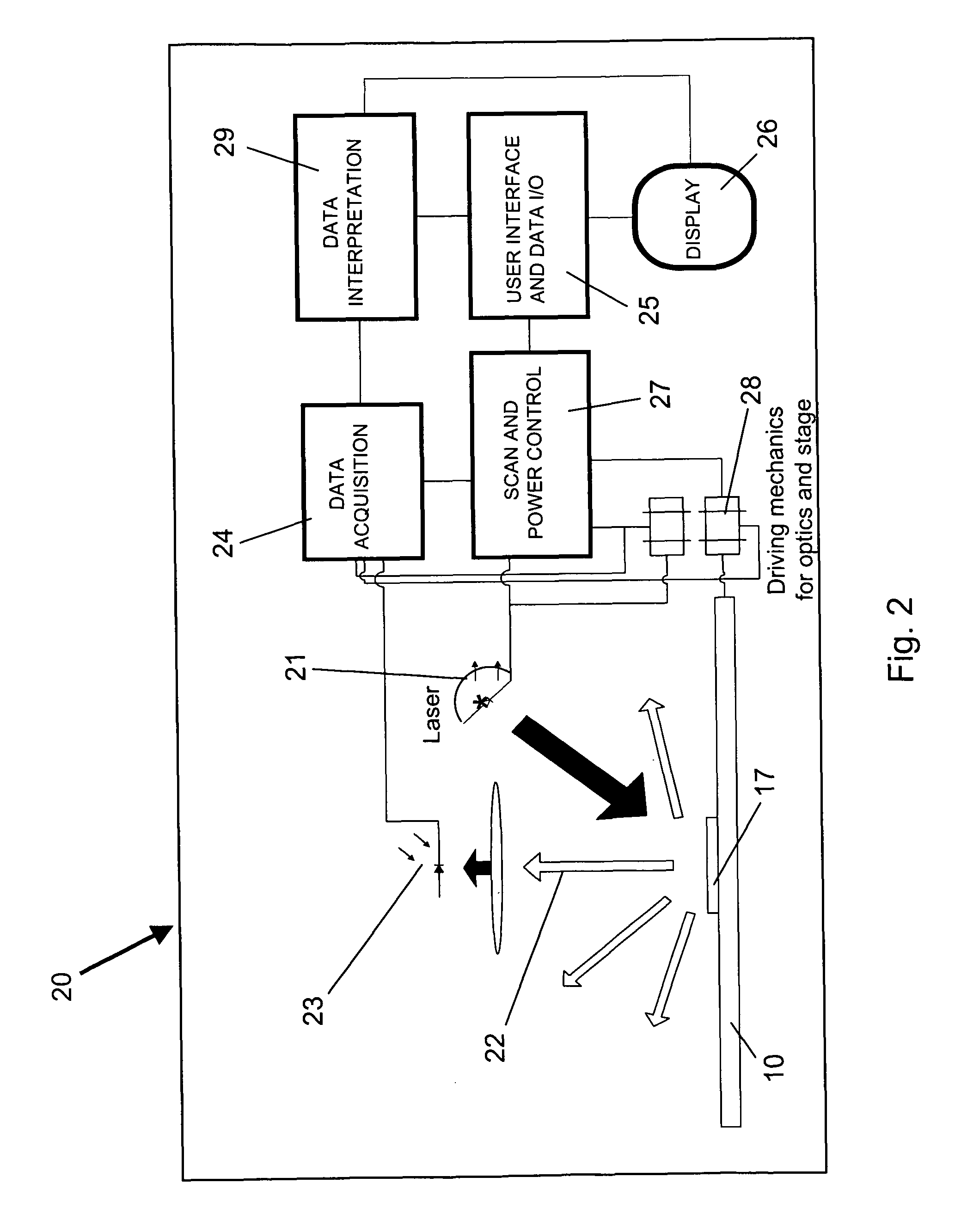Analytical cartridge with fluid flow control
a microfluidic and cartridge technology, applied in the field of analytical cartridges with fluid flow control, can solve the problems of complex application of macro-scale flow control techniques, such as mechanical valves and discrete pumping, and the inability to meet the requirements of micro-scale applications, and achieve the effect of improving the efficiency of micro-scale applications
- Summary
- Abstract
- Description
- Claims
- Application Information
AI Technical Summary
Benefits of technology
Problems solved by technology
Method used
Image
Examples
example 1
Sandwich Assay
[0085]Multiple antigens from the same sample can be detected on the same analytical cartridge. Different analytical regions of the cartridge have solid support (e.g., base section material or porous substrate) bound antibodies against different antigens. A sample that may include one or more of the MHC antigens of interest incubates with a variety of labeled antibodies against the range of the antigens. Then, antigens bound to their specific antibodies are specifically captured by the different solid support bound antibodies at each analytical region. Labeled antibodies held in the analytical regions, through the antigen bound to antibody bound to the support, are detected at the region designated for that antigen. The assay can proceed, as follows:[0086]1) A cartridge is provided with 5 different monoclonal antibodies as a dry composition in the incubation chamber. Each of the monoclonal antibodies is to a different MHC antigen and each antibody is labeled with a fluo...
example 2
Universal Detection System
[0093]Cartridges for detection of different types of analytes, having substantially different detectable signals, can be read using the same detection system. Two different assay cartridges with different arrays of analytical regions and different signal intensities from detectable labels are analyzed using the same detector system. Cartridges are adjusted to provide approximately similar readable output ranges among the analytical regions associated with multiple analytes to be assayed on the cartridges. The cartridges include a code readable by the detector identifying the expected signal intensity range for each cartridge. The detector system configures the illumination intensity to an amplitude expected to optimize sensitivity and / or useful quantitation range for analytes on the currently scanned cartridge. The assay system can be configured as follows to provide reading of diverse assays on a universal cartridge reading system:[0094]1) Determine the us...
example 3
Porous Substrate Analytical Regions
[0099]A cartridge was prepared with a porous substrate in the detection channel.
[0100]The cartridge, essentially as shown in FIG. 5, included a bottom section 50 with a relatively flat surface, but for capillary flow enhancing groves 63 in the filter area, and alignment pegs complimentary to holes in the top cover 51.
[0101]The top cover included most of the topographic features of the chip, including, e.g., the sample loading inlet 52, an upward filter recess 53 to receive much of the filter 54 height, an upward reaction recess 55 to expand the volume of the incubation (reaction) chamber, an upward detection recess 56 to increase the detection channel volume and slow flow through the detection channel, and recesses leaving unrecessed surfaces 57 (not shown here in detail) defining serpentine capillary channel flow path (flow modulator).
[0102]Two sided tape membrane 58 with excised areas acted as the membrane layer between the bottom section and top...
PUM
| Property | Measurement | Unit |
|---|---|---|
| height | aaaaa | aaaaa |
| height | aaaaa | aaaaa |
| thickness | aaaaa | aaaaa |
Abstract
Description
Claims
Application Information
 Login to View More
Login to View More - R&D
- Intellectual Property
- Life Sciences
- Materials
- Tech Scout
- Unparalleled Data Quality
- Higher Quality Content
- 60% Fewer Hallucinations
Browse by: Latest US Patents, China's latest patents, Technical Efficacy Thesaurus, Application Domain, Technology Topic, Popular Technical Reports.
© 2025 PatSnap. All rights reserved.Legal|Privacy policy|Modern Slavery Act Transparency Statement|Sitemap|About US| Contact US: help@patsnap.com



